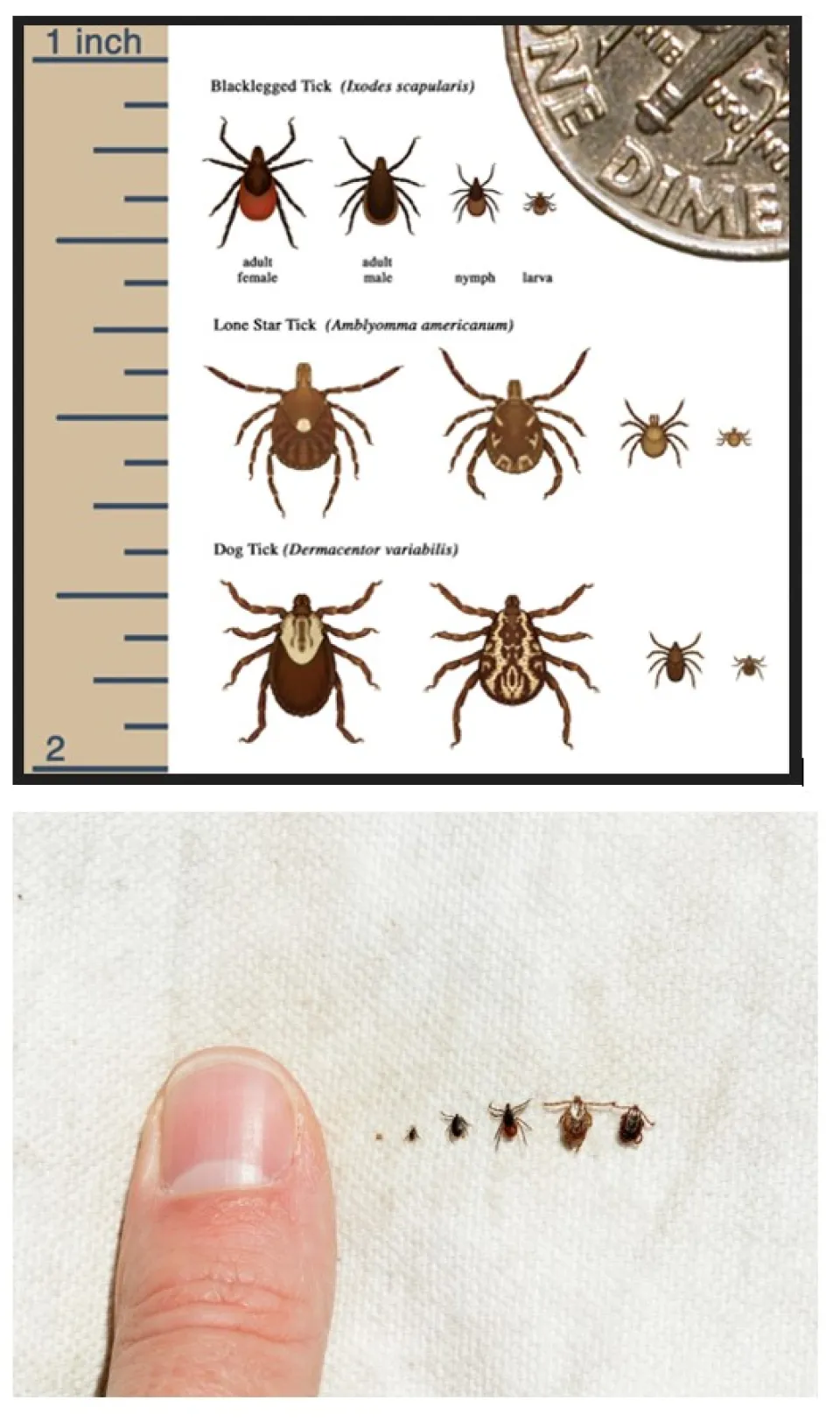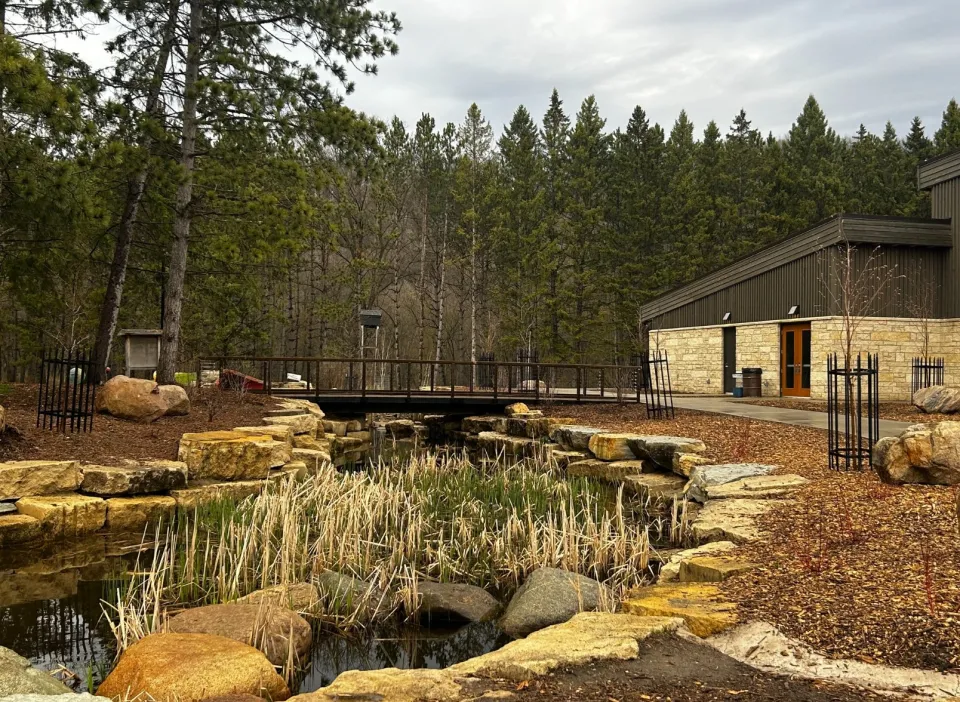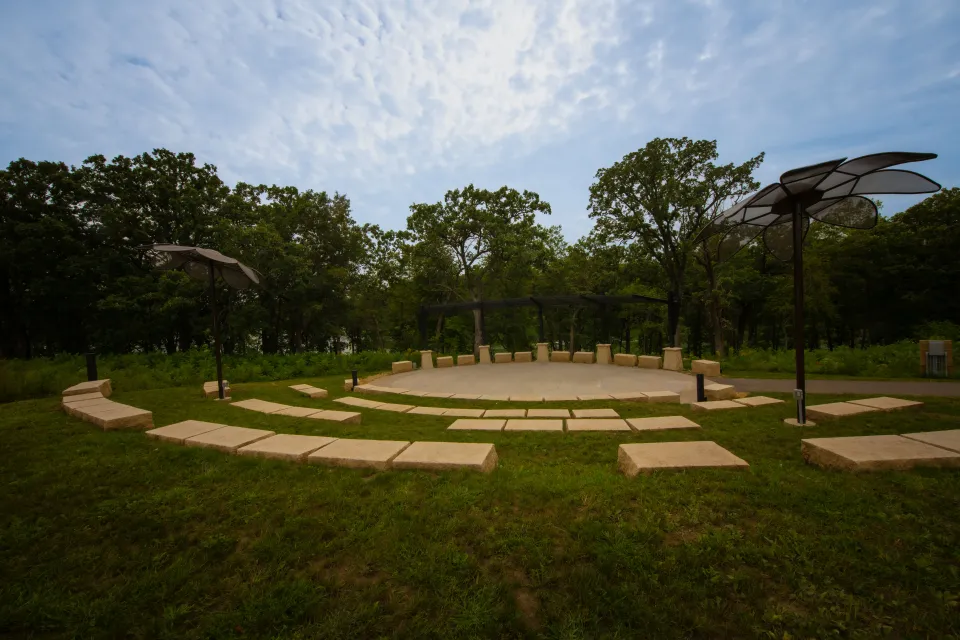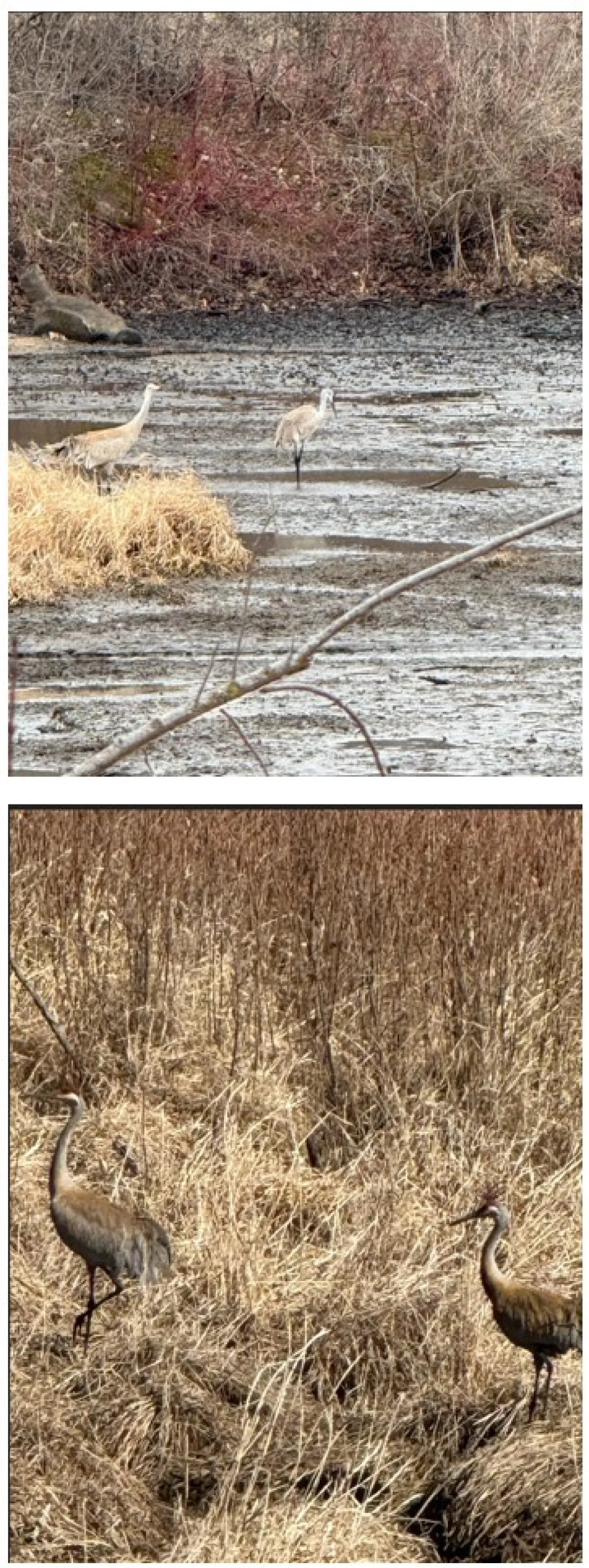Olmsted County Parks Newsletter - Summer 2025
Volume 11, Issue 2
In this issue
Climate change and ticks, the origin of Chester Woods, meet our winter inters, and much more....
A legacy takes root: Chester Woods celebrates 30 years of service
by: Michael Bergum
I had the privilege of interviewing Jim Foote, who served as the superintendent of Olmsted County Parks from 1982 to 1995. It was during his tenure that the concept of transforming Chester Woods into a county park materialized. In the 1980s, Olmsted County already possessed a portion of the land that constitutes the park today. Jim disclosed that he had to acquire more than fifty percent of the land that currently constitutes Chester Woods to establish this park. Before this period, the Chester Woods area contained several informal trails. A rental establishment provided trail bikes to patrons who navigated these sandy trails, resulting in significant erosion and disorder.
Before we go into the story of how Chester Woods became a county park, we should look for
events in history that created the concept that led to new infrastructure. Let me give you two instances: The devastating tornado that struck Rochester in 1883 and the devastating flood that hit the city in 1978 led to what? After a tornado in 1883 killed 37 people and injured many more, the Sisters of St. Francis of Rochester asked Dr. William Warroll Mayo to serve as the hospital's physician. After he said yes, this 1889 hospital was named St. Marys. The 1978 Rochester flood resulted in six people losing their lives. It was overwhelmingly agreed upon in our community that something had to be done to prevent future floods like this. The Army Corps of Engineers and the Soil Conservation Service were engaged to create a flood control plan for the Rochester area. The initial plan had an issue that needed fixing. The federal government required that plan submitted had to have benefits for the community that were greater than the cost of the project. Building a massive flood control project needed to have more than one community benefit. Incorporating a recreational component into the project would provide daily access to an amenity that would outweigh the cost. It was planned that the largest reservoir in the project resulting from one of the largest earthen dams in the state would be located in Chester Woods. A new county park was born! There had to be a formalized plan before the Soil Conservation Service could do the construction. The park's design was contracted out to Yaggy Colby Associates. So, what kinds of recreational pursuits ought to be incorporated, and which ones ought to be deleted? Rochester officials were interested in developing the land into a golf course. This went against the county's wishes. Surprisingly, a legally binding agreement was signed mandating the preservation of 700 acres of the park in their natural state, except for areas designated for trail construction. Even now, the western half of the park is comprised of undeveloped land. Potential uses for the 600 acres that remained included roads, picnic areas, a campground, and administrative and maintenance buildings for the park. Jim shared just how nervous he was when In 1995, the gates of Chester Woods County Park were opened to the greater public. Before that, design and construction took at least seven years. The first step in making this new county park was to clear 10 acres of land where the dam would go. The excavation revealed a layer of sand. Another benefit was discovered. Why not use this resource for a swimming beach? Another issue that required consideration was the management of the numerous trees that would be situated in the lakebed. Many were cut down, but many were saved because they would make excellent fish habitats. Some of these trees still remain visible in the lake. Roads were constructed, then staff buildings and picnic shelters. That left the campground. Have you ever wondered why the campground was not put on a more level location? The abundance of trees at the proposed campground site was a deciding factor. This area also served as a tire dump. Over 2000 tires of all sorts created a tangled mess, making removal quite a challenge. Another difficult task in construction was building the present office building. Low and behold it was to be located on quicksand. It took several days of excavation to get to a suitable soll layer for footings.
Any park that is not well-managed will resemble nature in its most disorganized state. This was not the case for Chester Woods. All the maintenance and long-term planning was the responsibility of two employees along with seasonal staff. The first park manager was Earl Bosshardt. Also, a huge shout out needs to go to Tom Eckdahl who served the park in its construction phase followed by 28 years, many of which included park manager before his untimely passing in 2023. He was well known for his servant leadership style and outgoing engagement with the park patrons. Tom also provided a wonderful environment for volunteers along with encouraging the founding of Friends of Chester Woods which continues to be a strong partner supporting the educational, recreational, and environmental needs of Chester Woods. Jim and I concluded the interview, but not before he mentioned that his privilege of overseeing Chester Woods become an Olmsted County Park was his crowning achievement.
- Ernie Freudenburg

Climate change helping ticks survive

by: Clarissa Schrooten
Minnesota has always been known for its frigid winters. The last two winters have been undeniably warmer than the typical, and the trends from the last 30 years point to a slight rising average winter temperature. Many people are enjoying the less harsh winters, and so are some insects such as ticks.
The two common ticks in Minnesota are the Wood Tick (American Dog Tick) and the Deer Tick (Black-legged Tick). Wood ticks can spread diseases such as Rocky Mountain spotted fever or tularemia, but cases of these diseases transmitted to humans are low. The deer tick is the tick that transmits diseases such as Lyme’s disease and anaplasmosis which cause humans and pets symptoms of illness that can be slight to severe and can be short-term or last for years. Deer ticks can live for 2-3 years and will need to find a host for 2-3 blood meals. An adult female will lay hundreds to thousands of eggs in the spring, by summer those eggs will hatch into larvae. The larvae are very tiny versions of the deer tick. These larvae will need to find a blood meal, since they are so small they choose small mammals such as mice or other rodents. After they have feasted on blood, they will go dormant through winter, then molt their small skin in the spring and emerge as a nymph. Nymphs are slightly smaller than the adult deer tick. Then they are on the look-out for a blood meal. Now the blood meal can be a larger mammal such as a deer or human. The tick will again go dormant for winter than molt out of its small skin into the adult deer tick. This adult tick will then be searching for its blood meal. Each time the tick feeds, sucking blood from a host, it can pick up the bacteria that cause tick-born illnesses in humans and pets.
Ticks rely on the warmer seasons to be active. With warming winters in Minnesota this means being conscientious of the presence of ticks in the spring, summer, and fall. Potentially even during the winter when temperatures are at or above 40 degrees Fahrenheit. According to the experts at the Global Lyme Alliance, temperatures around 40 degrees Fahrenheit can make the potential for a tick to go from dormant to active. What is even more advantageous for ticks to rouse into actively seeking a host is no snow cover. The Global Lyme Alliance believes that just a few inches of snow create an effective barrier to keep ticks lying dormant.
When venturing out and enjoying the comfortable weather in winter and early spring, remember to keep ticks in mind and check for ticks after being out in nature.
Meet our winter interns
by: Jaide Ryks
We are happy to introduce you to our winter interns, Mary and Lydia!
Mary Bernau is a soon-to-be graduate from Kasson-Mantorville Schools. Mary started interning with us in September 2024 through a high school internship program. Once her internship ended, Mary decided she didn’t want to leave us at Oxbow Park and started a work study program to continue helping out. Mary even volunteers on days that aren’t required by her programs! After graduation Mary plans to attend RCTC and get an associate’s degree in environmental science. Her dream job is to become a zookeeper here in Minnesota. In her free time, she enjoys hiking and visiting other zoos. Mary’s favorite area to work at Oxbow Park are the domestic animals and cats. I asked Mary if there was anything else she’d like to add and she replied “I always feel welcome and a part of the team and no matter if I’m having a bad day or not, I always leave Oxbow happier.”
Lydia Hilgenkamp interned at Oxbow from January-March. Lydia graduated from the University of Minnesota-Twin Cities and currently works in guest services at the Minnesota Zoo, but would love to become a zookeeper someday. Lydia was a great addition to our naturalist team and even returns to volunteer. In her free time, she enjoys hiking, going out to eat and spending time with friends. During her time at Oxbow, Lydia best enjoyed the “Circle” exhibit with the porcupines, fox, and her favorite zoo animal, the fisher. She said she “loves all the animals and people and wishes she could be here every day.”

Friends Of Oxbow

by: Jolaine Hines
We are excited to welcome the spring weather to our community! Along with the change of seasons, our Board of Directors has recently gone through some exciting transitions. We are thrilled to welcome five new board members to Friends of Oxbow: Lauren Schimek, Kate Moericke, Mathew Clemens, Rebecca Bromelkamp, and Megan Bischof. These new directors bring incredible talents and ideas and we can’t wait to see what they will accomplish. At this year’s Annual FOX Meeting in April, we elected four new Officers: Jolaine Hines – President, Sara Lassila – Vice President, Mathew Clemens – Treasurer, and Kate Moericke – Secretary. Congratulations to the new officers!
Friends of Oxbow also wants to recognize four FOX board members who recently stepped off the board. We thank former officers Seanne Buckwalter, Kristina Nelson, Deb Hanson, and Tammy Monson for their incredible years of service to support the new Nature Center!
FOX enjoyed participating in the Oxbow Park nature Art Show in April! If you didn’t have a chance to grab some FOX merchandise, including our always-popular stuffed animals, stay tuned for more opportunities this summer. Follow us on Facebook for all the latest happenings: www.facebook.com/friendsofoxbow/
Thank you to all of you for continuing to support Friends of Oxbow and our mission to Oxbow Park!
30th Anniversary activities
by: Celeste Lewis
2025 marks the 30th anniversary of Chester Woods Park and we are planning numerous events throughout the year. As was stated in the previous newsletter, we started the festivities off with the Candlelight Hike in February. This event was a great success and brought in over 200 people.
We are continuing the celebration with the Friends of Chester Woods hosting a Prairie narrated wagon ride on June 22. This will be a two-hour narrated ride and will require pre-registration as the wagon has limited capacity. Registration will be made by calling 507-328-7350.
On July 12 there will be a full day of different activities. It will start with a wagon ride out to the Dam Overlook in the morning at 10:00 a.m. Again, this will require pre-registration due to limited seating. From 2:00- p.m.-4:00 p.m. there will be a foam party near Shelter 1 and cake and park information booths at that Shelter. The evening will wrap up the day’s activities with a musical performance by “The Lonely Knees” at the park’s amphitheater from 6:00 p.m. – 8:00 p.m. On July 19th the park will host another free concert at the amphitheater. This time there is a musical performance by the local group The Nodding Wild Onions from 6:00 p.m. -8:00 p.m.
Olmsted County parks have a full calendar of programs and events for the public to enjoy. Please check out the current program listings on the parks website at Parks programs | Olmsted County, MN .

The Spring Bugle of the Sandhill

by: Celeste Lewis
Each spring, one of North America’s most exciting wildlife scenes stretches across skies and wetlands: the migration of the Sandhill Cranes. These gorgeous birds, known for their red crowns and distinctive bugle calls, travel thousands of miles from their southern wintering grounds to northern breeding territories, some even as far north as Alaska and Siberia.
Sandhill Cranes are ancient birds; fossils date back from over two million years ago. Despite their prehistoric roots, their migratory behavior remains tuned to modern ecological cues. They follow traditional flyways, relying on wetlands and open fields to feed on grains, invertebrates and tubers.
Not only is their migration a visual marvel, but it plays an important ecological role. The cranes foraging in the fields helps cycle nutrients in the soil and their presence often indicates a healthy wetland ecosystem.
Here at Chester Woods Park, we are fortunate to host several of these magnificent birds annually. My first sighting this year was on March 15, 2025, where I saw 5 of these big beauties congregating in the inlet for the lake. However, often, before spotting them one will hear their fantastic calls in the sky. Seeing these birds always reminds me that Spring is here, and summer is on its way!
